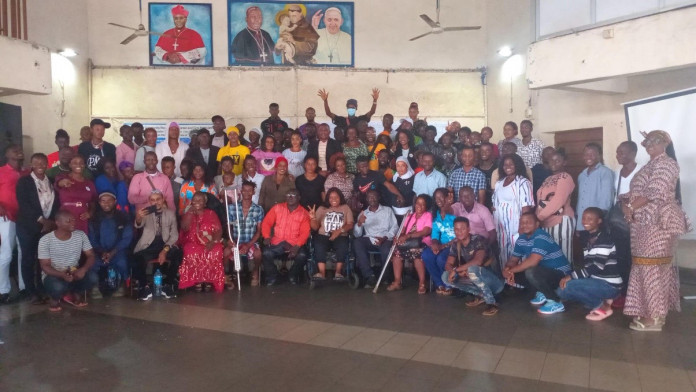By Millicent Senava Mannah
Caritas Freetown, with funding support from Trocaire, has successfully completed a two-day training of trainers for stakeholders and community members from five slum and coastal communities. The event took place on July 16th and 17th, 2024, at Saint Anthony Hall on Syke Street in Freetown.
The initiative is part of a ten-month project aimed at strengthening community resilience and protecting women and girls through integrated disaster preparedness (Goal 4) and violence mitigation (Goal 3) in the Western Area of Sierra Leone. The participating communities included Lakka, Number Two, Portee Wharf, Wellington Old Wharf and Gloucester Village, with a total of seventy-five participants, including six persons with disabilities.
Idriss Gibson Mansaray, Disaster Management Focal Point at Caritas, highlighted that the training aimed to empower these communities by enhancing their resilience through integrated disaster preparedness and response. Using a problem tree analysis, participants were divided into groups to identify and categorize disasters affecting their lives and livelihoods, such as flooding, fire disasters, deforestation, stone mining and malaria.
Mohamed Sahid Conteh, National Administrative Secretary General of the Community Disaster Management Committee (CDMC), facilitated sessions on disaster risk reduction, basic disaster terminologies, community assessment, hazard and risk mapping and community timelines, among other topics.
Alie Kamara, a participant and Chairman of the Number Two community, praised Caritas and Trocaire for the timely training. He emphasized the importance of implementing preventive measures and pledged to engage his community members on the knowledge gained.
Jennifer Sesay, a participant with a disability from Gloucester, also commended the organization for the training. She highlighted deforestation as a significant issue in her community, leading to heavy winds ,unroofing houses. She committed to educating her community on the dangers of deforestation and its environmental impact.
Both participants expressed the need for the project to continue, allowing more people to benefit. The training concluded with the submission of identified problems and recommendations from the various groups.




